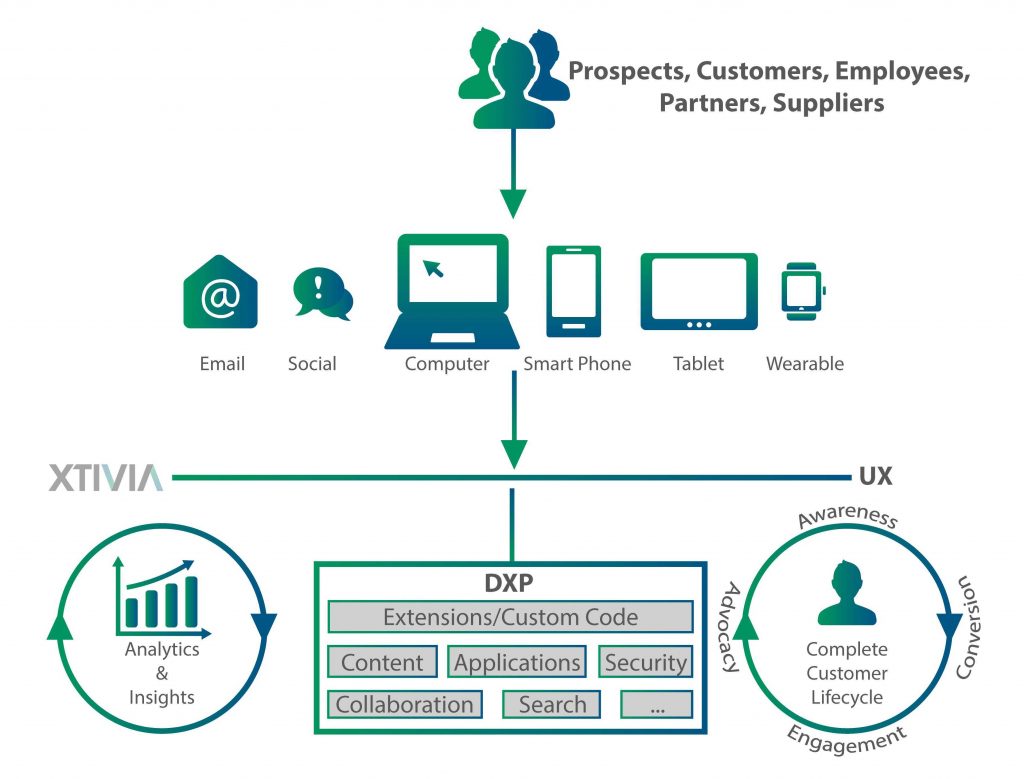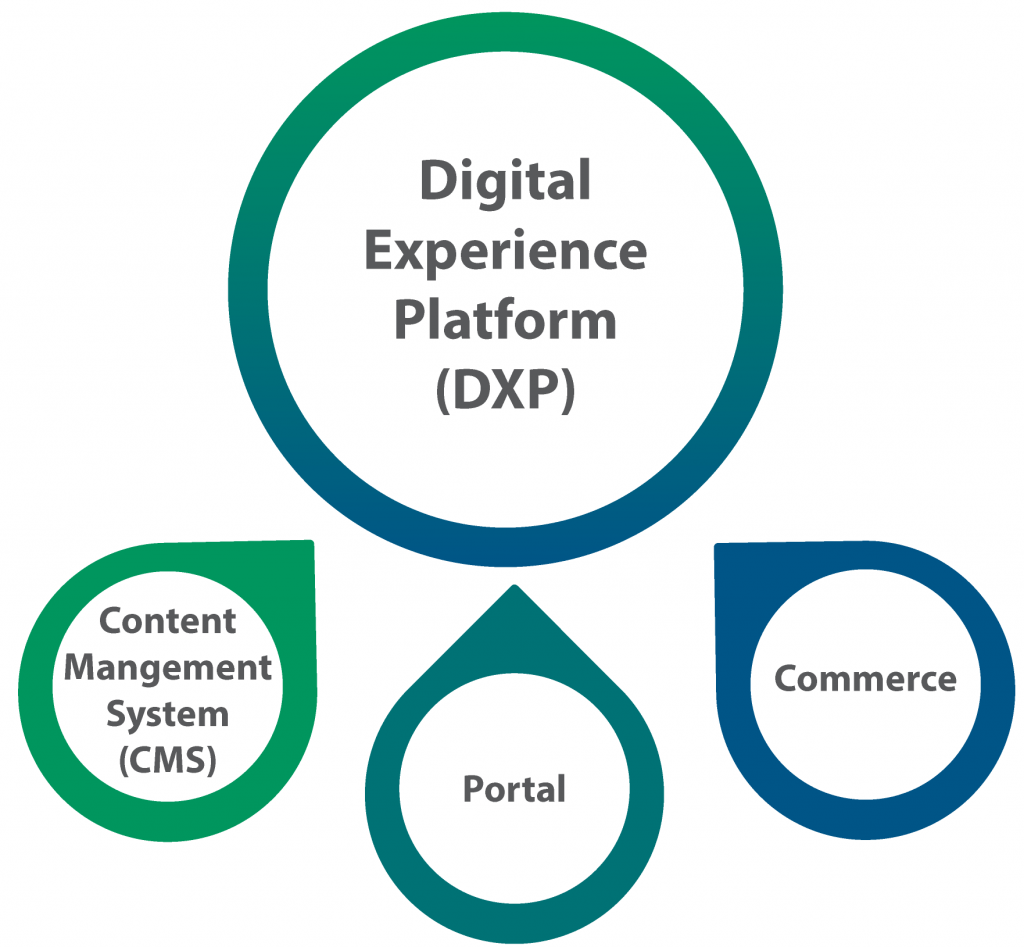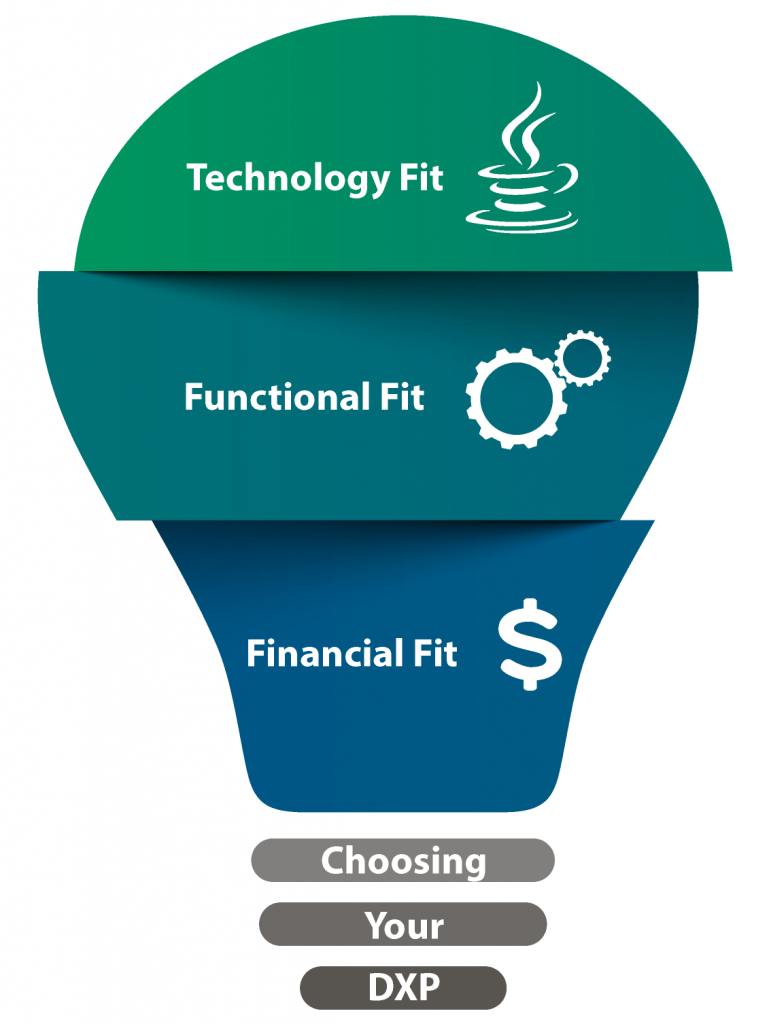Digital Experience Platform or DXP, User Experience Platform or UXP, Customer Experience Platform or CXP – you have probably heard some or all of these terms flying around or being thrown at you by vendors, industry literature, or even your CxO or Digital Strategist in internal meetings, and wondered what they are about. And more importantly are these simply buzzwords and nothing has materially changed, or whether there is a market / technology shift underway? In this article, I will share perspectives from leading analysts at Forrester and Gartner, but also add my color commentary that comes from in-the-trenches implementations of similar solutions since the year 2000 along with an understanding of customer needs and desires, and the reality of such solutions.
Yes, I said it – the reality does not always match the hype, and if you go in with colored glasses, you will be disappointed. While these platforms are vital to any digital strategy and even digital transformation of your enterprise, they are not a panacea and require a well-planned and well-executed implementation of the right DXP product. But before we go too far, let us level-set on what a Digital Experience Platform (DXP) is and what it offers you.
What is a Digital Experience Platform (DXP)?
I am going to begin with some definitions from Forrester and Gartner. In October 2015, Mark Grannan, Ted Schadler, Stephen Powers et al in The Forrester Wave: Digital Experience Platforms defined digital experience platforms broadly as – Software to manage, deliver and optimize experiences consistently across every digital touchpoint. They also call out that “With the customer at the center, a digital experience platform architecture will help to align strategies, teams, processes, and technology to meet this integration imperative”.
Gartner has been using the User Experience Platform or UXP moniker to refer to essentially the same concept as DXP, and they define UXP as follows – A user experience platform (UXP) is an integrated set of technologies used to provide interaction between a user and a set of applications, processes, content, services or other users. A UXP has several components, including portals, mashup tools, content management, search, rich Internet application (RIA) tools, analytics, collaboration, social and mobile tools. It may be delivered as a suite of products or as a single product.
While these definitions are helpful in understanding Digital Experience Platforms, I have what I believe is a simpler definition –
Breaking down my definition into even simpler terms –
- A Digital Experience Platform is a platform that allows you to build meaningful applications for your user audience. It is not a pre-packaged app that you simply deploy and / or rollout.
- It serves multiple digital channels or touchpoints including web, mobile, social, email, and connected devices.
- It serves multiple user audiences such as customers, partners, employees, suppliers, and others, and allows interactions between these audiences.
- It serves users at different points in their journey – for example, end-to-end customer lifecycle from awareness to conversion to customer engagement/interaction/self-service to advocacy or employees from a new hire to a long timer.
- The digital experience is integrated and optimized across the various delivery channels as well as across various backend systems.
And now let us look at this Digital Experience Platform definition visually –

Figure 1: Digital Experience Platform Overview
Now that you have my DXP definition, let us dive into what a DXP offers you.
Digital Experience Platform Ingredients
According to Gartner, a UXP / DXP provides many services including:
- Content
- Context
- Portal
- Collaboration
- Social
- Mobile
- Search
- Analytics
- Orchestration/composition
- Integration and API services
Continuing to quote Gartner, “a UXP provides a high-fidelity and holistic user experience (UX) across the breadth of services provided. A UXP is a platform for the presentation layer. Without a platform approach, a ‘tool de jour’ approach is frequently used by developers, leading to a mishmash of one-off tools from a long list of vendors (or open source), and a maintenance nightmare”.
According to Forrester’s Mark Grannan in TechRadar™: Digital Customer Experience Technologies, Q1 2015, among the application portfolios of most of the top DX vendors, you might see some or all of the following types of solutions:
- Digital asset management systems
- eCommerce solutions
- Email service providers
- Forms
- Mobile analytics
- Mobile app platforms
- Online video platforms
- Self-service portals
- Product information management (PIM) systems
- Recommendation engines
- Site search capabilities
- Social depth platforms
- Testing and optimization tools
- Web analytics
- Web chat tools
- Web content management (WCM) systems
As you can see, there is significant overlap between the perspectives from Gartner and Forrester, and I tend to mostly agree with them that most of these capabilities are relevant in any mature digital experience platform. However depending on your scenario, some or all of these capabilities might not be relevant to you as they are not applicable in your business or because you have a best-of-breed tool (or tools) in your enterprise that you do not wish to replace but rather want to integrate into the rest of your digital experience ecosystem – more on this later.
Digital Experience Platform versus Portal versus CMS
Clearly, there is overlap between a DXP, a portal, and a CMS but at the same time, there are key differences. In many cases though these differences are becoming smaller as products try to move into each other’s domains.
A Content Management System (CMS) or Web Content Management (WCM) is geared towards building a public website and only has limited support for a logged-in user experience with appropriate access control as is needed in a customer or partner self-service scenario. The only users logging-in to a CMS are the content authors, editors, and administrators. An example of an open source, Java CMS that we work with at XTIVIA is the Hippo CMS.
A traditional Portal is geared towards building a self-service portal with role-based access control and the ability for the end user to customize the user interface based on their preference. Portals in the Java space typically adhered to the Java Portlet specifications (JSR 168 and 286) for enabling application developers to build custom functionality with integration into various back-end systems. A portal was looked upon as a single point of entry for personalized access to applications, content, processes and people. Various portal products had a varying degree of support for content management.
As explained above, a DXP combines functionality from both portals and content management systems, and supplements this with other aspects.
Quoting Forrester, Digital Experience Platforms must meet six key needs or themes –
- Coordinate content, customer data and core services to drive reuse and quality.
- Unify marketing, commerce, and service processes to improve practitioner workflows.
- Deliver contextually and share targeting rules to unify the “glass”.
- Share front-end code across digital touchpoints to manage a common user experience.
- Link data and analytics to add insight and drive action.
- Manage code and extensions for maximum reuse while avoiding over-customization.
At XTIVIA, we have a strong preference for Liferay (that we have worked with for many years at major enterprises including HP, Bosch, Blue Cross Blue Shield, Domino’s, and many others) and Jahia as two lightweight, Java-based, enterprise open source digital experience platforms that have a strong portal heritage.
Digital Experience Platform Product Landscape
There are many DX products and product suites in the market from a variety of vendors, and they all have their strengths and weaknesses. There is no such thing as a perfect product that provides all the functionality you can imagine in a truly integrated fashion, that is agile and has a low TCO. Most products have a Portal or CMS or Commerce heritage, and are particularly strong in those areas, and even if the product suite has strong capabilities in other areas, then they are typically through acquisition and not well-integrated with the rest of the product.

Figure 2: Heritage of Digital Experience Platforms
At the end of the day, you will have to take into account what is important to you and pick the right platform based on your drivers. Some of the key factors to consider include –
- The technology fit – these products are typically based on Java, Microsoft, or PHP technology stacks and based on the kind of skills in-house from a development and operations perspective, this may be a key consideration in whittling down the list of prospective platforms. Keep in mind that most products do support JavaScript / HTML5 front-end development and this reduces the impact of technology fit – however, it is still a consideration as the product back-end might leverage these technologies and your comfort with them will impact your success.
- The functional fit – if you are a consumer-oriented retailer and need a heavy commerce, multi-channel capability with deep support for thousands of products, personalized offers, campaigns, and a strong personalization capability based on user behavior, then you probably are better off with a product that has a commerce heritage. If on the other hand, you are an enterprise that deals with enterprise customers and partners, and have a significant array of IT systems to integrate with, and offering self-service capabilities is key then a product with a portal heritage probably is a better fit for you. Most CMS and commerce products are limited in their ability to support deep integrations into external systems but most portals have evolved to include good audience targeting / campaign management capabilities that can support additional stages of the customer / partner lifecycle. Another angle of the functional fit is to ensure that the various DXP capabilities that are directly applicable in your scenario play well with each other, and are not disjointed products, even if they are from a single vendor.
- The financial fit – this includes not just the one-time licensing and implementation costs, but also the ongoing development and operational costs. This is where some of the products with open source roots and an affordable, subscription model coupled with a lightweight architecture make sense and are making strong inroads in the marketplace. Liferay and Jahia, two of XTIVIA’s partners are strong contenders here.

Figure 3: Choosing your Digital Experience Platform
Conclusion
We now live in a connected, always-on world of information and services that can be accessed through any number of channels, including computers, tablets, smartphones, wearables, nearables, augmented and virtual reality technologies, embedded devices, shared devices, and smart devices. As the demand for personalized, connected experiences rises where users expect information at their fingertips all the time, so too does the need for digital experience platforms. As an enterprise that seeks to meet the needs of its users, you are (or should be) looking for technology that can unite customers’ experiences across digital devices and manage the many channels of interaction. And digital experience platforms will empower you to deliver exceptional experiences to your increasingly connected customers by helping you integrate new and old, disjointed technologies in your enterprise, and have a single, complete view of your customers across departments in your organization and throughout the entire customer lifecycle. And this along with the people and process aspects of digital transformation will enable you to get and stay ahead of your competition!
If you need assistance with your Digital Experience Strategy and Implementation or just need some advice, do reach out to us.
If you liked what you read, please share this helpful post with your friends and co-workers on your favorite social media here:


 Download the full “What is a Digital Experience Platform and Why You Need One?” ebook here.
Download the full “What is a Digital Experience Platform and Why You Need One?” ebook here.